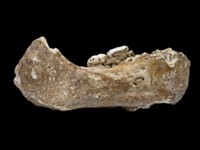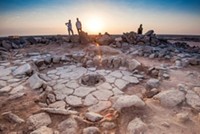Advertisement
Grab your lab coat. Let's get started
Welcome!
Welcome!
Create an account below to get 6 C&EN articles per month, receive newsletters and more - all free.
It seems this is your first time logging in online. Please enter the following information to continue.
As an ACS member you automatically get access to this site. All we need is few more details to create your reading experience.
Not you? Sign in with a different account.
Not you? Sign in with a different account.
ERROR 1
ERROR 1
ERROR 2
ERROR 2
ERROR 2
ERROR 2
ERROR 2
Password and Confirm password must match.
If you have an ACS member number, please enter it here so we can link this account to your membership. (optional)
ERROR 2
ACS values your privacy. By submitting your information, you are gaining access to C&EN and subscribing to our weekly newsletter. We use the information you provide to make your reading experience better, and we will never sell your data to third party members.
Environment
Old European Cheese
Pottery fragments from Poland show Northern Europeans were making cheese in 6th millennium B.C.
by Sarah Everts
December 17, 2012
| A version of this story appeared in
Volume 90, Issue 51
Switzerland and France may produce some of Northern Europe’s most desired cheese, but Poland can now boast that its population has been making it the longest. Researchers led by Richard P. Evershed of Bristol University, in England, took samples from 50 pottery fragments found at several Polish archaeology sites and determined with mass spectrometry that they contain fatty acid residues consistent with ancient cheese making. The pottery fragments, which date back to the 6th millennium B.C., provide the earliest evidence for cheese making in Northern Europe (Nature, DOI: 10.1038/nature11698). The only older evidence of cheese making comes from sites in Anatolia, Turkey, that date back to the 7th millennium B.C. Anthropologists are keen to track down the onset of cheese making because it provided prehistoric people with a supply of nutritious food that did not require killing valuable livestock and because the complexity of the multistep process indicates its practitioners were technically advanced. Evershed’s team suspects that the potsherds might have been used to separate cheese curds from liquid whey because they have many small holes and look similar to strainers used in 19th- and 20th-century cheese making.





Join the conversation
Contact the reporter
Submit a Letter to the Editor for publication
Engage with us on Twitter